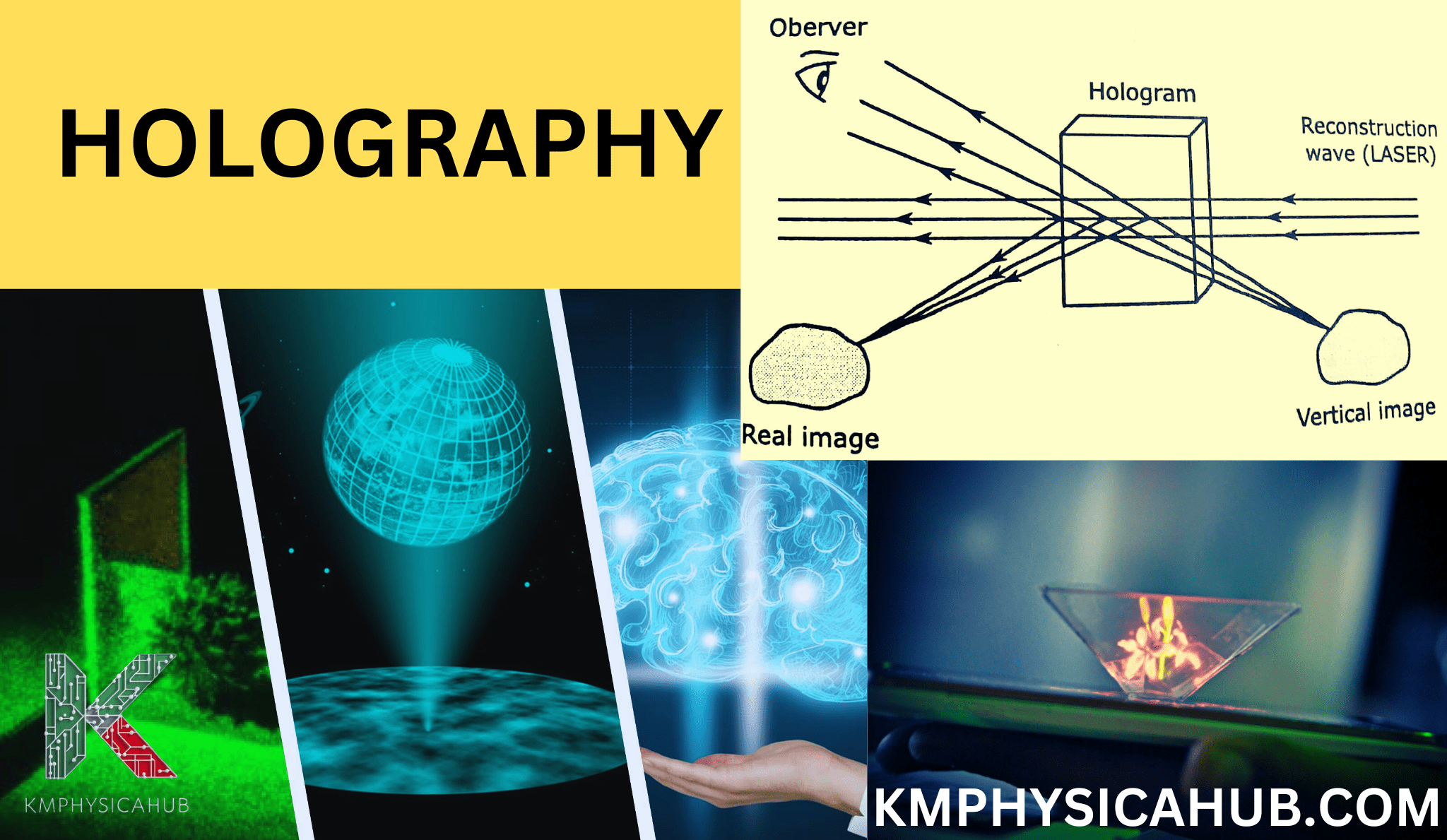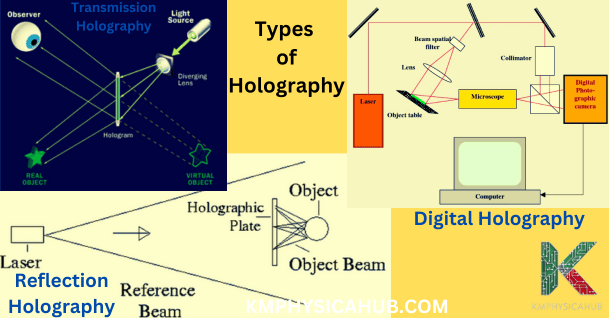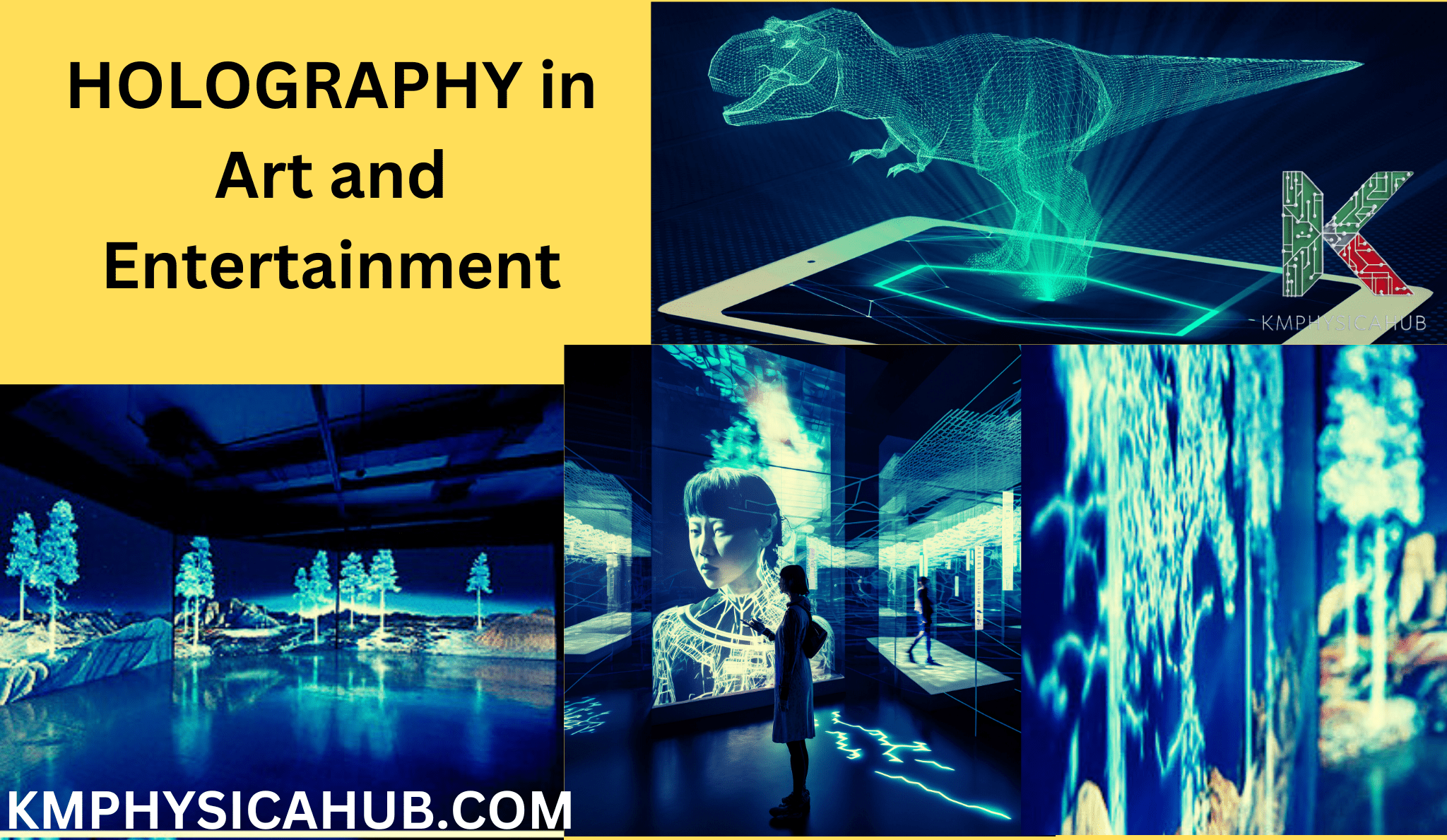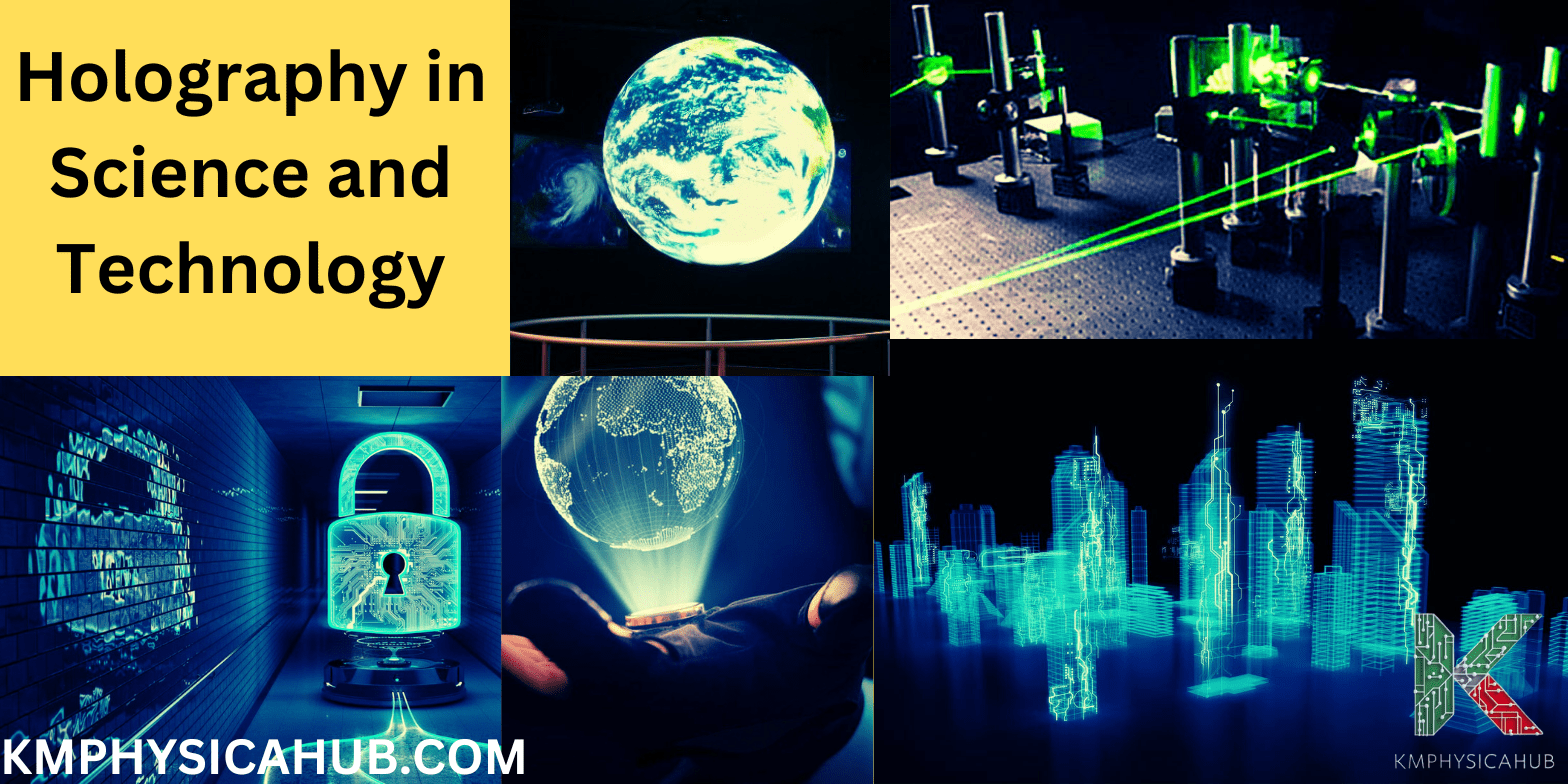How Holography Works: Exploring the Principles and Techniques of Holographic Imaging
What is Holography?
Holography is a form of photography that records a whole wave front of a wave, including the scattered light waves which make 3D images seem to hover in space. As compared to common photography, holography not only captures the light’s intensity, but also the phase of the light waves recording all possible information about the object from the photographed scene.
History and Importance of Holography
Brief History of Holography:
The idea of hologram was first introduced in 1948 by Dennis Gabor and was awarded the Nobel Prize in Physics in 1971 for his inventions. In fact, the true practical holography was impossible until 1960 when lasers were invented and these were dire because they were coherent light sources which were a significant factor when creating holographic interference patterns. Holograms that were created decades ago were generally black and white and could only be viewed using specific equipment. Promising technologies have later enabled the creation of full color holograms and other easier ways to view them.
Importance and Impact of Holography:
Holography has revolutionized different constructs of all classes of technology and has influenced different fields such as arts, science, technology and every day life. It has opened up new horizons in graphics, data storage, security, and biological applications such as X-ray imaging system. The technologies based on the capture and manipulation of light waves have now extended to several areas of application and are seen to pose greater potential in the future.
How Holography Works
Interference and Diffraction:
Holography is the science that involves recording and reconstructing the interference and diffraction fringes of a light wave. When two beams of light which comprise smooth varying intensities are allowed to interfere then it creates interference pattern which shows series of bright views along with dark fringes. It is a pattern of information that tells how the light waves are related in terms of phase as well as amplitude.
Recording the Wavefront:
In holography the first step is to divide the light beam into object beam, which is aimed to the object and reference beam which is aimed to the hologram plate or other proper medium. This interference pattern between the object beam and the reference beam is then captured at the medium.
Reconstructing the Wavefront:
If the recorded hologram is illuminated with a laser beam, the diffraction arose from the interference pattern replay the wavefront of the object beam. This results in the making of a three-dimensional image that seems to be floating in space and exhibit parallax.

Types of Holography
Transmission Holography:
This type of holography is formed by illumination of the opposite side of the hologram with Laser Beam and the reconstructed image would appear in front of the plastic hologram. This is among the most used holography methods and in this method light reflected by an object takes a similar path in reaching the eye of the viewer.
Reflection Holography:
In reflection holography, a combined image or picture is reconstructed by reflecting light on hologram. This is usually used when working on embossed holograms observed in the typical light conditions in the environment.
Digital Holography:
It uses an optical digital sensor to convert the interference pattern and a computer algorithm to reconstruct an image. As a result, digital holography is more flexible and accurate than the analog since it has the full control of the holographic procedure and/or the direct access to the stored wave fronts.

Holography in Art and Entertainment
Holographic Displays:
The use of holographic displays is growing rapidly as it helps people to enjoy different performances and movies at a much higher level than 2D planes. These displays employ holography for image production that float independently in space where one can actually sense the depth.
- Museums and Art Installations:
Holographic displays are being applied in museums to display historical artifacts, art pieces , and scientific models in a more captivating and innovative manner. They enable visitors to view the objects in different orientations and thus give them a richer appreciation of their provenance and meaning.
- Immersive Experiences:
These displays are also popular for designing the environments in themed entertainment, games, parks, and other social places. Such installations can offer real-life settings, characters, and narratives which enable the viewers to transfer to a different realm.
Holographic Projections:
They are employed in concerts, theater performances, and special events for the projection of realistic three-dimensional images in motion. Such projections can give an impression of the performers, objects, and scenes in three-dimensional sense, thus giving a new dimension to the live shows.
- Concerts:
Holographic projections are incorporated in concerts as they help create spectacular images that would further complement the music and feel of the concert. They can display photos of the band members, set up tricks and even bring ‘images’ of the performers on stage.
- Theater Performances:
Holographic projections are as well applied in theater to construct sets, effects, even various other virtual complex universes, which opens new opportunities for theatrical art.
Holographic Art:
Holography is equally effective for aesthetic purposes because it empowers artists with a special ability to create sculptures, installations, and photographs.
- Holographic Sculptures:
Holographic sculptures can not only produce shapes but can also create form and touch like no other typical sculptures can. They also can have some moving parts included; therefore, the art will be dynamic, and the audience will have an interactive experience.
- Holographic Installations:
Holographic installations may be used to develop the social interactive installation that appeals to the viewers’ emotion, touch and sight sensation. These installations are able to encompass all types of works, including holography projections, sculptures and others, all being integrated to produce a unified experience.

Holography in Science and Technology
Holographic Microscopy:
Holographic microscopy is a highly effective method that employs laser radiation to illuminate an object and to register the resulting hologram of the scattered light. The obtained hologram can be reconstructed further to reproduce the 3D image of the sample with high resolution and depth. This technique is often applied in biology to investigate cells, tissues, or any other small objects that cannot be easily observed.
- High Resolution and Depth:
One of the major benefits of holographic microscopy is related to visualization of objects with high accuracy, which makes it possible to analyze various sophisticated structures and processes at the cellular level.
- Live Imaging:
Holographic microscopy exists as a tool for capturing images of living cells and tissues, giving insight into biological processes in living conditions.
Holographic Data Storage:
This technique suggests great promise in the field of data storage and data access density. Storage capacity that is possible in three dimensional records is much more than can be put into two dimensional records.
- High Storage Density:
The benefits of holographic data storage systems include the fact that a huge amount of data can be stored in a compact physical area, possibly far beyond the current hard-disk or optical-disc densities.
- Fast Access Speeds:
These systems include the holographic data storage systems which means that one can retrieve the information very easily.
Holographic Security Features:
Holographic patterns are very common in security features because they are hard to copy and one can tell if it is original or fake.
- Credit Cards and Banknotes:
The technique of incorporating the hologram in the security features is widely used in credit cards, banknotes, and other related documents to check the cases of forgery. These features can either be laminated into the card material or can be issued as independent holographic labels.
- Product Authentication:
Holographic labels have applications in product authentication to prevent imitation products from circulating in the market by giving the consumers an assurance that the product they are using is original.
Holographic Interferometry:
Holographic interferometry is also a method that applies holography for making the observation of small shifts which include stress, vibration, or change in temperature.
- Engineering Applications:
Holographic interferometry can be applied to revival of the macroscopic objects such as bridges, buildings and discovering of the weak points that can cause failures in constructions.
- Scientific Research:
In scientific research, holographic interferometry becomes quite useful in the examination of the many phenomena such as how the material behaves under stress, how wave propagates, and the action of fluids among others.

Holography in Medicine and Healthcare
Holographic Imaging in Medicine:
Holography is prevalent in medicine mostly to build up three dimensional pictures of the human body for medical purposes. It enables the physician to have a wider perspective of the anatomy of the patient and the nature of the disease, there by providing a proper solution to the problem.
- Medical Imaging:
There are other approaches to holography including Holographic tomography and Holographic microscopy with the advancement in these developing methods, more real and clearer pictures of internal organs, tissues, and cells can be obtained.
- Surgical Planning:
Patients’ 3D holographic models of anatomy can also be utilized for preparing surgeries. It helps surgeons to assess difficulties of the operation ahead.
Holographic Microscopy in Medical Research:
It is applied in the course of the medical research to investigate the biological samples and to design new treatments. This technique helps in establishing images of cells, tissues, and other small structures in a three-dimensional view, which is highly useful for detailed analysis of biological systems.
- Drug Discovery:
This technique can be used to analyze the impact of drugs on healthy cells and tissues, such as the discovery of prospective medicinal drugs, as well as enhancing the delivery systems of existing medications.
- Disease Diagnosis:
This form of microscopy can assist in the early detection of diseases because particular markers or abnormalities result from diseases in cells and tissues.

Advantages and Limitations of Holography
-
Advantages:
Three-Dimensional Images: Holography involves formation of 3D pictures that appear to change as the observer shifts their position from one point to the other and therefore, they are not mere 2D images.
High Information Density: Holography has the ability to store as well as to reproduce a large amount of data. This make holography useful for dense packing of data and ultra-high resolution visualization.
Security Features: Due to the characteristics of holograms it is difficult to forge them and this makes them suitable for security applications such as identification.
-
Limitations:
Cost and Complexity: Some holographic systems are costly, and the manufacturing work may be intricate to accomplish, which is a disadvantage that has constrained the use of holographic systems in specific applications.
Limited Viewing Angles: In most instances, a holographic image is viewed with a particular angle and can not be observed from all angles at a time.
Difficulties in Color Reproduction: Concerning luminance, it is considerably more difficult to generate full-color holograms although progress is being made in regards to material and processes for colors.
Potential Applications in New Fields
Artificial Reality and Virtual Reality: Holographic displays can be used as the basis for depth cameras to enable an accurate and exact portrayal of the physical environment with an exact representation of the object and its location in space to create a realistic sense of virtual reality.
Nano-holography and Metamaterials: Nano-holography involves design and fabrication of structures at such a small scale that they produce holographs to make metamaterials with predetermined optical trademark which go well beyond traditional strides in the control and modulation of light.
Multi-View Holography: One of the most important benefits of this technique is that it is possible to create multi-view hologram and look at it through different angles of view thus making the coverage more realistic and three dimensional.
Conclusion:
Holography has developed from an historically interesting technique used in a relatively few areas of science to an important instrument in numerous fields. Starting from security measures to 3D screens, holography has now become a commonplace concept. Holography has a bright future with continued research and advancement in order to achieve new potentiality. With the continued development of new materials, techniques, and applications, holography promises to continue to assume even bigger part in defining the world technology, entertainment and perception.
FAQs
Q1. Define holography?
A: Holography is the photographic process of recording and reconstructing complete light wave-front, making three-dimensional images with full tolerance for parallax.
Q2. Explain the working of holography?
A: It uses lasers to record the interference pattern of light waves scattered from an object. This pattern is then used to reconstruct a 3D image.
Q3. What are the main applications of holography?
A: Art & Entertainment (3D displays, projections), Security (credit cards, product authentication), Science (microscopy, data storage), Medicine (imaging, bioprinting).
Q4. Can holograms be touched?
A: Not yet. Holograms are images projected by light, they do not have physical substance.
Q5. What are the limitations of holography?
A:
- High cost
- complexity
- limited viewing angles
- color reproduction challenges
Q6. How is holography used in security?
A: Holographic patterns are difficult to replicate which makes them useful for authentication of products and to prevent counterfeiting.
Q7. Write three benefits of holography?
A:
- High resolution
- 3D imaging
- ability to study living cells and tissues in real-time.